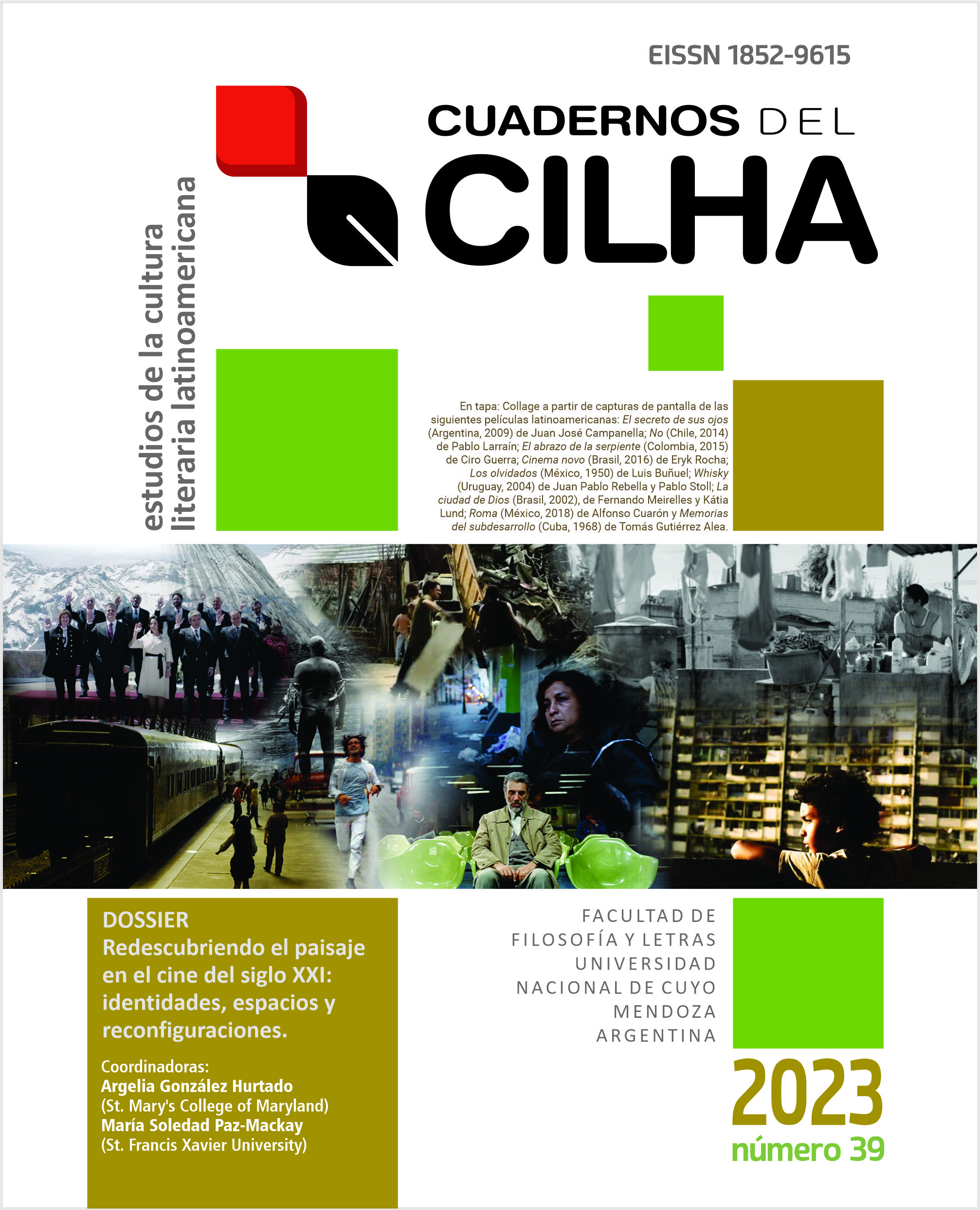El régimen despótico de la escritura epistolar en El pudor del pornógrafo de Alan Pauls
DOI:
https://doi.org/10.48162/rev.34.064Palabras clave:
cartas, imaginación pornográfica, traición, nombre, rostroResumen
El pudor del pornógrafo (1985) puede ser leída como una novela de imaginación pornográfica, que reformula tanto el relato pornográfico convencional como la novela gótica, y que se caracteriza por una serie de recursos apropiacionistas. Pauls recurre a la corrupción del género epistolar, a la perversión amorosa que sugieren las cartas escritas bajo la acechanza de peligros innominados que cifran otras parodias: los riesgos de intercepción, vinculados a una época signada por el terror político y reescritos en clave fantástica; los devenires moleculares que atraviesa la protagonista; los flujos demónicos en el acto de escritura, la subversión del precepto pornográfico de anteponer el principio del placer sobre el principio de eficiencia en la novela de Pauls; el desencanto de la utopía amorosa, la traición orquestada por una protagonista femenina que deviene e indica que para ser capaz de amar es preciso haber deshecho el amor, el rostro y los nombres. El cuerpo sin órganos de la escritura se plasma en cartas que sustituyen al cuerpo, a los fragmentos que lo componen, en la escritura epistolar de las novelas.
Citas
Ainsa, F. (1986). Identidad cultural de Iberoamérica en su narrativa. Editorial Gredos
Deleuze, G. y Guattari, F. (2004). Mil mesetas. Pre-Textos.
Derrida, J. (2008). El animal que luego estoy si(gui)endo. Editorial Trotta.
Fernández, Á. (2017). La reverberación del espanto: espectros de la Historia en El pasado de Alan Pauls.
A contracorriente. Una revista de estudios latinoamericanos, 15(1), 103-126.
Fischer, C. (1997). Gärten der Lust. Metzler Verlag.
Foster, H. (2016). El retorno de lo real. La vanguardia a finales de siglo. Ediciones Akal.
Foucault, M. (2010). El cuerpo utópico. Las heterotopías. Nueva Visión.
Hoffmann, E. T. A. (2011). Vampirismo. Reino de Cordelia.
Lojo, M. R. (2013). La novela histórica en la Argentina, del romanticismo a la posmodernidad. Cuadernos del CILHA, 14(19), 38-66.
Martínez, M. L. (2019). Huellas del yo en Historia del pelo de Alan Pauls. Letras (Lima), 90(131), 188-208.
Pauls, A. (2010). Historia del pelo. Editorial Anagrama.
Pauls, A. (2014). El pudor del pornógrafo. Editorial Anagrama.
Pimentel, L. A. (2005). El relato en perspectiva: estudio de teoría narrativa. Siglo Veintiuno Editores.
Rodríguez, E. (2020). Nacer a destiempo: sobre El pudor del pornógrafo, la última novela de Alan Pauls. Revista Landa. Revista do Núcleo Onetti de Estudos Literários Latino-Americanos, 8(2), 274-290.
Sontag, S. (1997). La imaginación pornográfica. En Estilos radicales. Taurus.
Violi, P. (1987). La intimidad de la ausencia: formas de la estructura epistolar. Revista de Occidente, (68), 87-99.
Virguetti, P. (2018). Las máscaras de Eros en El pudor del pornógrafo de Alan Pauls. Presses universitaires de Bordeaux. https://hal-u-bordeaux-montaigne.archives-ouvertes.fr/hal-02542915/document
Vitallini, R. (2007). Brujas, hombres lobo y vampiros. Grupo Editorial G.M.R.
Whitman, W. (2014). Hojas de hierba. Colección Visor de Poesía.












































